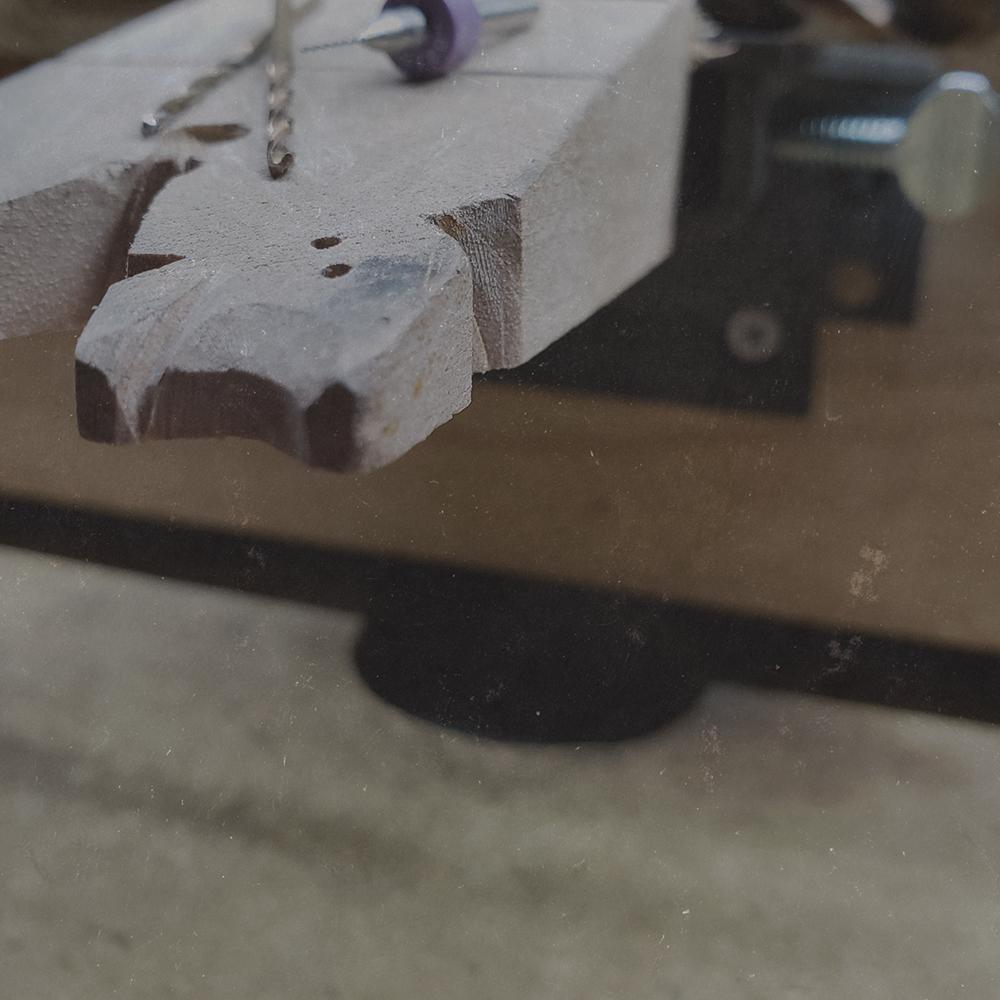Labret piercing studs can be worn in multiple different piercings – it’s a very versatile piece of body jewelry!
Here are some of my favorite uses for labret studs:
- Nose rings – Yes, you can wear lip studs as nose studs, too! Inserting them can be a bit fiddly because they go in from the back of your piercing, but it is doable and very comfortable to wear once they are in – using an appropriately sized pin taper makes it even easier.
- Conch earrings – If you are going to use a labret post for your conch piercing, make sure that you are buying a long enough post. Wearing jewelry that fits too tightly can damage your piercing (any piercing, not just conch piercings).
- Tragus earrings - Labret posts are particularly nice because they have a flat backing, which makes them more comfortable to wear while using head phones or ear buds.
- Lobe piercings – The flat backing on labret posts is very comfortable in comparison to the long, pointy posts that regular earrings have.
- Helix studs - For the same reason that labret posts make great earrings for lobes, the flat backing doesn't dig into the side of your head when worn in helix piercings.
- Other lip piercings – This one is pretty obvious, but I thought it should still be mentioned that labret jewelry can be worn in philtrum (Medusa), Monroe (left side of the top lip), and Madonna (labret placed in the upper lip on the right) piercings.
Things to Consider Before Purchasing a Labret Stud
The two most important things to know before you purchase a labret stud for your other body piercings is: 1) what gauge jewelry you wear, and 2) what length of post you wear.
The gauge is easy to determine, in fact you most likely already know that because you should have been given that information when you were pierced. If you don’t know, then you can measure how thick your current jewelry is with a caliper – please note that you cannot measure gauge with a ruler. The most common gauge that you will find labret posts in is 16 gauge, but you can find them in other thicknesses, like 18 gauge and 14 gauge.
Here is a list of the standard AWG (American Wire Gauge) measurements:
- 22 gauge = 0.64mm
- 20 gauge = 0.81mm
- 18 gauge = 1.02mm
- 16 gauge = 1.30mm
- 14 gauge = 1.63mm
- 12 gauge = 2.06mm
- 10 gauge = 2.59mm
- 8 gauge = 3.25mm
Important Note: The millimeter measurement that corresponds with each gauge can vary slightly depending on the manufacturer (usually +/- 0.5mm) because there is not a universal standard set for body jewelry sizing at the time this post was written. For example, you may find that your 16 gauge helix stud measures 1.2mm.
Next, you need to know what length of post fits your piercing. You will also need to use a caliper for this, a ruler will not work. The measurement you need to take is how thick the area is where your piercing is located.
For example, to measure a tragus piercing you would use the caliper to measure how thick the cartilage is – if you are using a digital caliper, the top jaw of the caliper would be positioned on the back side of your tragus piercing, and the bottom jaw would be positioned on the front of your piercing (this can probably be done the other way around, too, but this is the positioning that I find easiest while measuring in the mirror).
Make sure the jaws of the caliper are only lightly touching your skin, not digging in, as the latter will give you an inaccurate measurement resulting in a piece of jewelry that fits too tightly.
Picking Out Your Jewelry
Once you know what post length and gauge you wear, you can do the fun part – pick out your new jewelry! The two different types of labret posts you will find are metal ones and plastic ones. Both types come in externally and internally threaded versions, as well as push pin types. Internally threaded and push pin versions are preferable over externally threaded posts because the threaded portion doesn't pass through your piercing during insertion.

